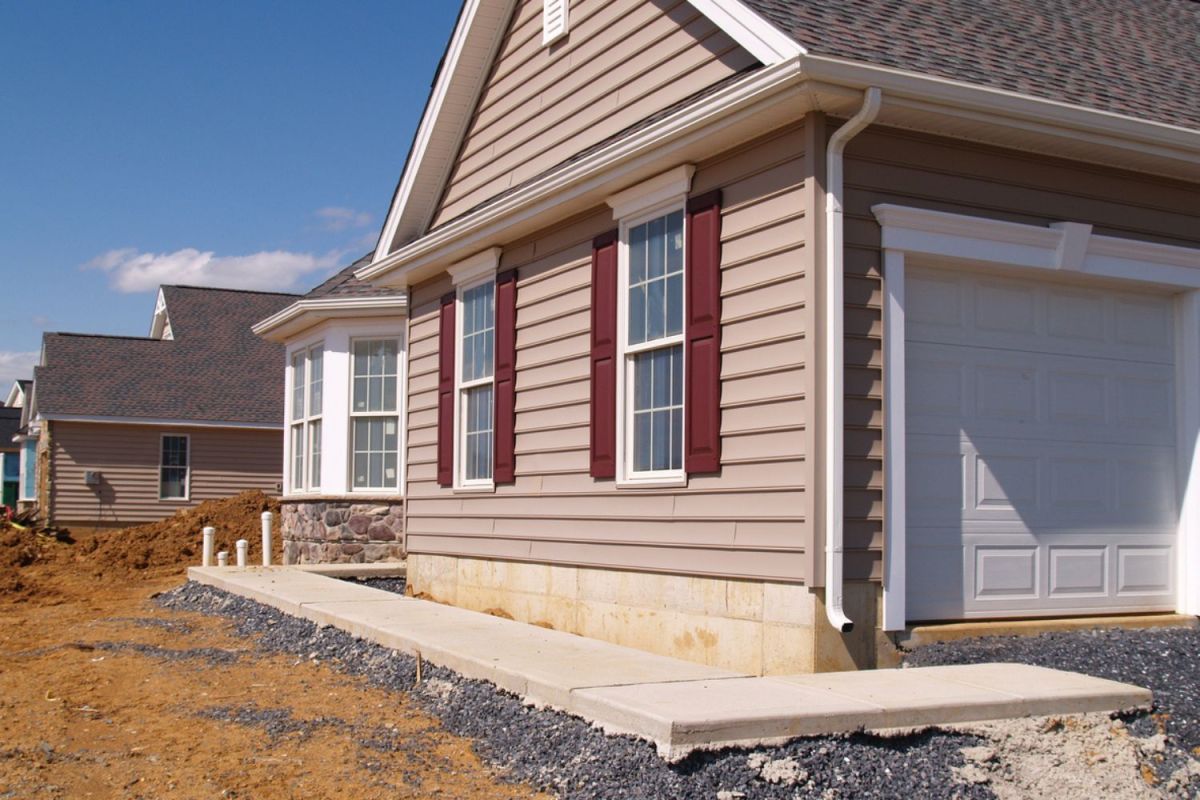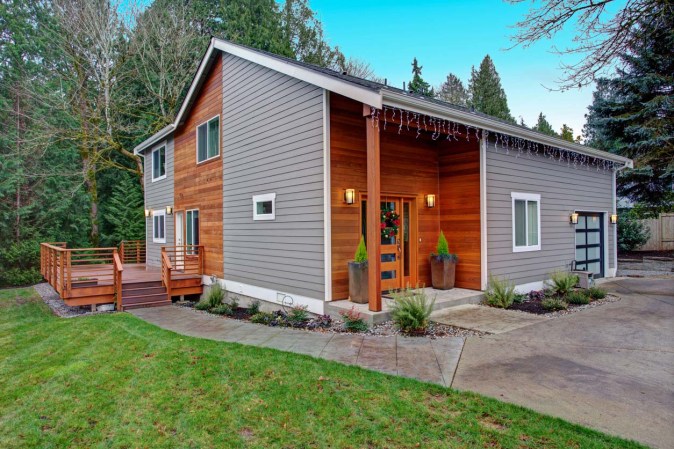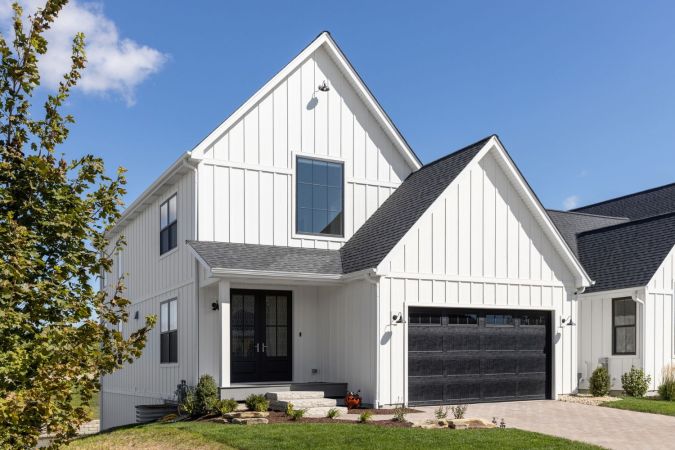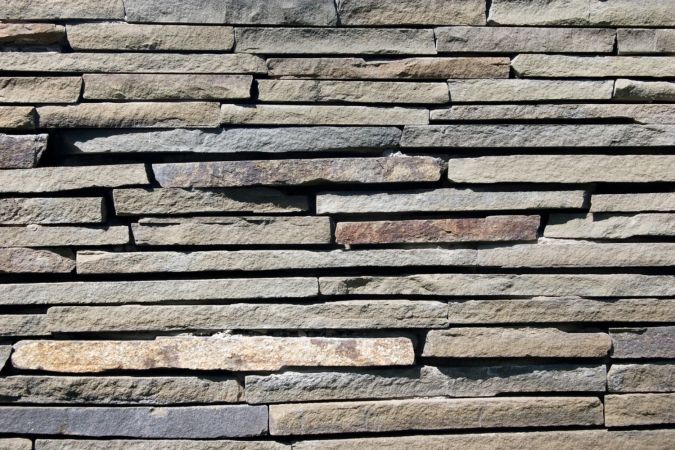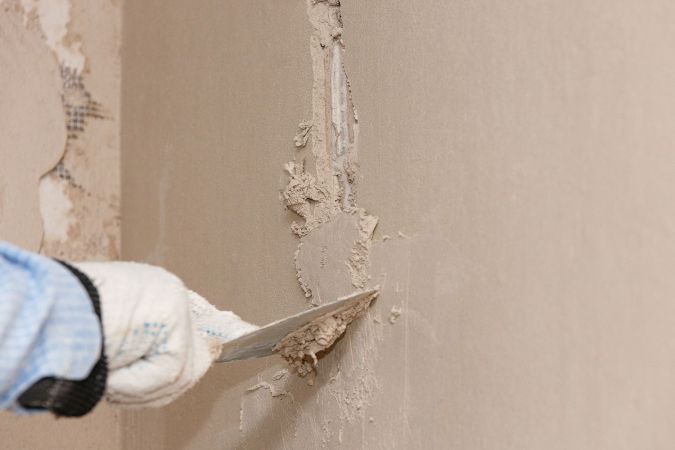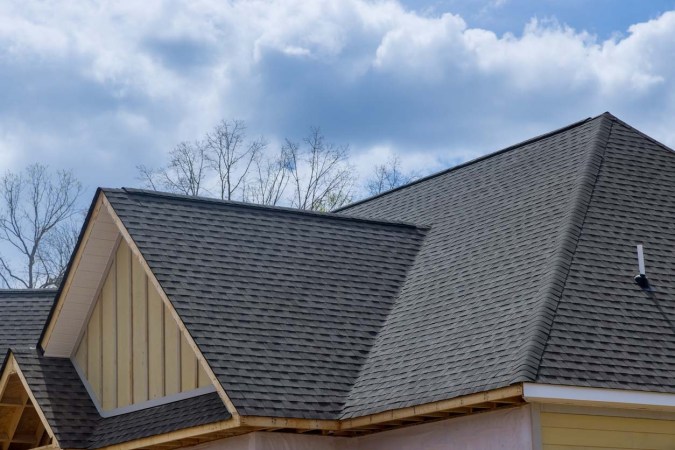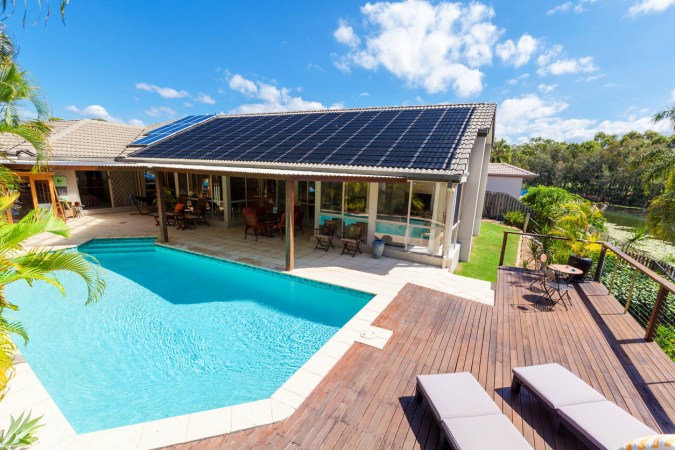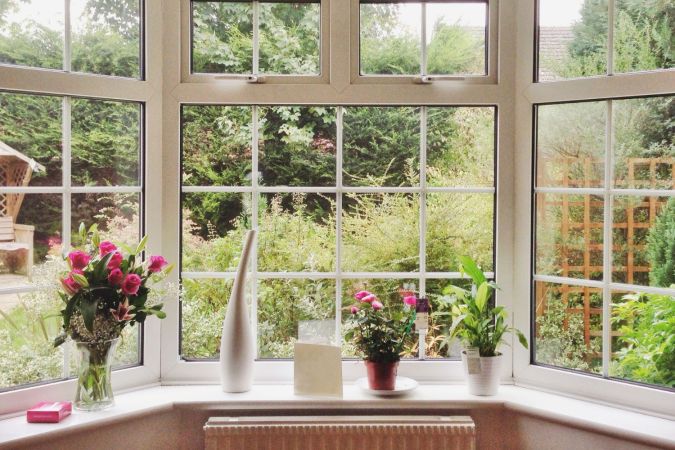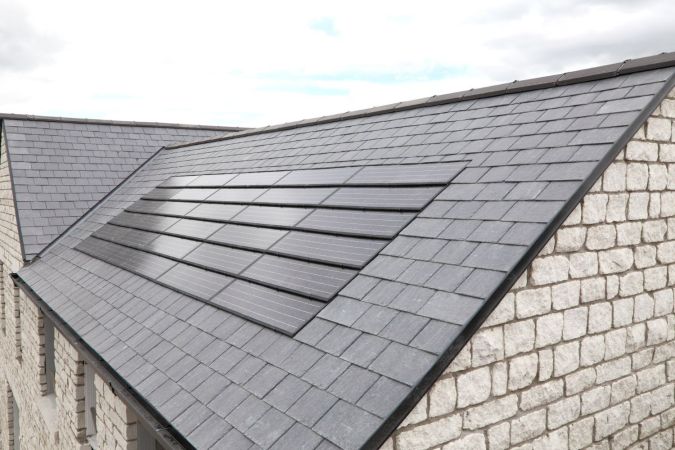We may earn revenue from the products available on this page and participate in affiliate programs. Learn More ›
Highlights
- Installing fiber cement siding typically costs between $6,555 and $22,851, or a national average of $14,641.
- Some of the main contributing factors to the final cost include the height and size of the home; the type, style, and brand of siding; the cost of labor; and the home’s geographic location.
- Fiber cement siding is durable, long-lasting, versatile, eco-friendly, and impact-resistant, pest- and moisture-resistant, and fire-resistant. It also has low maintenance requirements and is aesthetically pleasing.
- Installing fiber cement siding can be difficult due to the weight of the material; additionally, improper handling of the siding can result in damage to the siding, which would only increase the cost of the project. A professional is recommended for fiber cement siding installation.
New homes, older homes, and even historic homes can benefit from the installation of highly durable fiber cement boards in place of standard lap siding or vertical siding material. Fiber cement siding is available in a range of colors and can last up to 50 years with proper maintenance, cleaning, and minor repairs. Not only can fiber cement siding resist warping and impact damage, this material is also resistant to fire, moisture, mold, UV radiation, rodents, termites, and other invasive pests.
According to Angi and HomeAdvisor, installing fiber cement siding can be a fairly costly project, ranging from $6,555 to $22,851, with an average cost of about $14,641. The exact cost will depend on the home height, siding type, siding style, cost of trim, average labor cost, square foot cost, and color options. Custom colors typically cost a bit more than standard colors, but they can help to give the home a unique appeal. Homeowners can learn more about the various factors that can affect fiber cement siding costs with this informative guide.
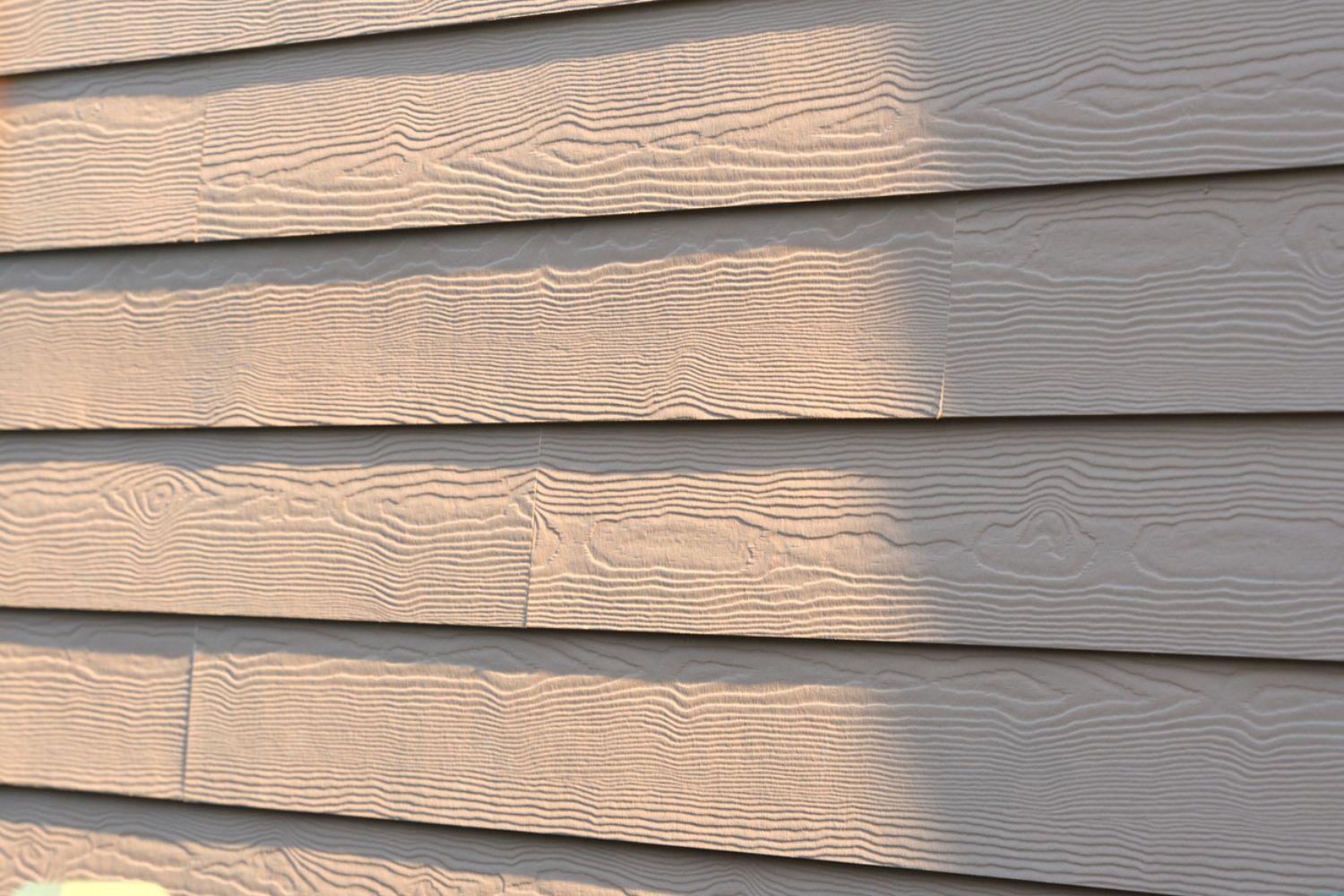
Factors in Calculating Fiber Cement Siding Cost
Fiber cement siding costs can vary significantly depending on several different factors, including the size and height of the home; the type, style, and brand of the siding; local labor costs; and even the geographic location of the home.
Home Size and Height
The size of the home is one of the most important factors to consider when homeowners are coming up with a price estimate for this project, because the bigger the home, the more material and labor it will take to complete the installation. Typically, fiber cement siding will cost about $4 to $15 per square foot, with customized materials occupying the higher end of the cost range.
It’s also necessary for a homeowner to consider the height of the home. When a second story is included in the project, the cost of the materials and the labor could double to account for the additional fiber cement siding products, as well as the time and effort it takes for the professional installers to complete the work. Additionally, any dormers, gables, or other sharp, angular exterior features will require specialized measurements and cuts, increasing installation costs.
| Home Size (Square Feet) | Average Cost (Labor and Materials) |
| 1,000 | $5,000 to $14,000 |
| 1,500 | $7,500 to $21,000 |
| 2,000 | $10,000 to $28,000 |
| 2,500 | $12,500 to $35,000 |
Siding Type
Fiber cement siding can be split into three main types, including panels, planks, and shingles. The main differences between these three types of fiber cement siding are the size, shape, and cost of materials. Panels are the largest type of fiber cement siding. This material is thicker and wider than both planks and shingles, allowing each panel to cover more of the building. Homeowners can expect to spend about $2.50 to $15 per square foot if they decide to put in fiber cement panels.
Planks and laps look like classic horizontal siding. The long, narrow shape is easier to manage during installation, and this type of siding also tends to cost less than fiber cement panels, at about $4 to $6 per square foot. Similarly, fiber cement shingles cost about $2 to $6 per square foot. This material mimics the appearance of cedar shingles, with a small, rectangular or square shape and smooth, rounded edges.
Siding Style
The siding style and the siding type are typically decided together, because certain styles look best with a specific type of fiber cement siding. For example, fiber cement panels are often designed to resemble stucco or stone veneer, while fiber cement shingles mimic the look of cedar shingles.
House siding costs can vary dramatically depending on the style and material. Homeowners will want to take some time to decide on the right aesthetic design for the exterior of the home before choosing the fiber cement siding style. Stucco and wood are relatively affordable at $3 to $9 and $2 to $6 per square foot, respectively. Vinyl siding costs are also relatively low at $3 to $11 per square foot. Stone siding tends to be the most expensive option, ranging from $17 to $30 per square foot. The table below shows the average costs for different siding materials so homeowners can compare these costs against fiber cement siding costs.
| Siding Style | Average Cost per Square Foot (Labor and Materials) |
| Aluminum | $3 to $11 |
| Brick | $7 to $15 |
| Stone | $17 to $30 |
| Stucco | $3 to $9 |
| Vinyl | $3 to $11 |
| Wood | $2 to $6 |
Siding Brand
The brand of siding can also influence the price of the materials, so before homeowners decide on the fiber cement siding for the project, it’s recommended that they research the various brands to find a product that meets their budget. Common fiber cement siding brands include Allura, James Hardie, and Nichiha, with Allura and Nichiha being the most affordable and James Hardie being higher-cost.
Allura fiber cement siding costs between $5 and $10 per square foot, including installation. Allura offers a 50-year warranty on products and a 15-year warranty on color coating, which can help reassure homeowners that their siding will last for years to come.
James Hardie is a well-known brand that helped to first introduce fiber cement siding to the market. Since then, the brand has also developed a range of fiber cement products, including planks, panels, and shingles. However, Hardie Board siding costs about $6 to $13 per square foot, which is higher than other fiber cement siding products.
Like Allura, Nichiha fiber cement siding products typically cost about $5 to $10 per square foot. Nichiha manufactures fiber cement siding by pouring the fiber cement into a solid mold for improved durability and customization.
| Brand | Average Cost per Square Foot (Labor and Materials) |
| Allura | $5 to $10 |
| James Hardie | $6 to $13 |
| Nichiha | $5 to $10 |
Labor
The local cost of labor to complete a fiber cement siding project can vary depending on the location, the specific materials, and the time of year. Typically, labor rates tend to be lower during the offseason, when there isn’t a high demand for this work. On average, homeowners can expect to pay about $2 to $8 per square foot in labor rates.
Homeowners will want to keep in mind that if the home has more than one story or any special architectural features, like dormers or gables, it will take more time and effort to complete the installation, leading to higher labor costs. Despite these costs, it isn’t recommended for homeowners to tackle fiber cement siding installation as a DIY project.
Geographic Location
The physical location of the home can also impact the cost of the fiber cement siding installation. This is primarily due to the average cost of materials, local labor rates, and the ongoing fluctuation between supply and demand. Generally, if the cost of living in the area is higher than in other areas of the country, the cost of fiber cement siding installation will also be higher.
However, it is worth noting that if there are a wide number of common home sizes, shapes, and styles in the area, then the general popularity of these home models may lead to reduced prices for the homeowners. This is because it takes less time to plan, order materials, and coordinate the installation when the installers have experience with similar homes.
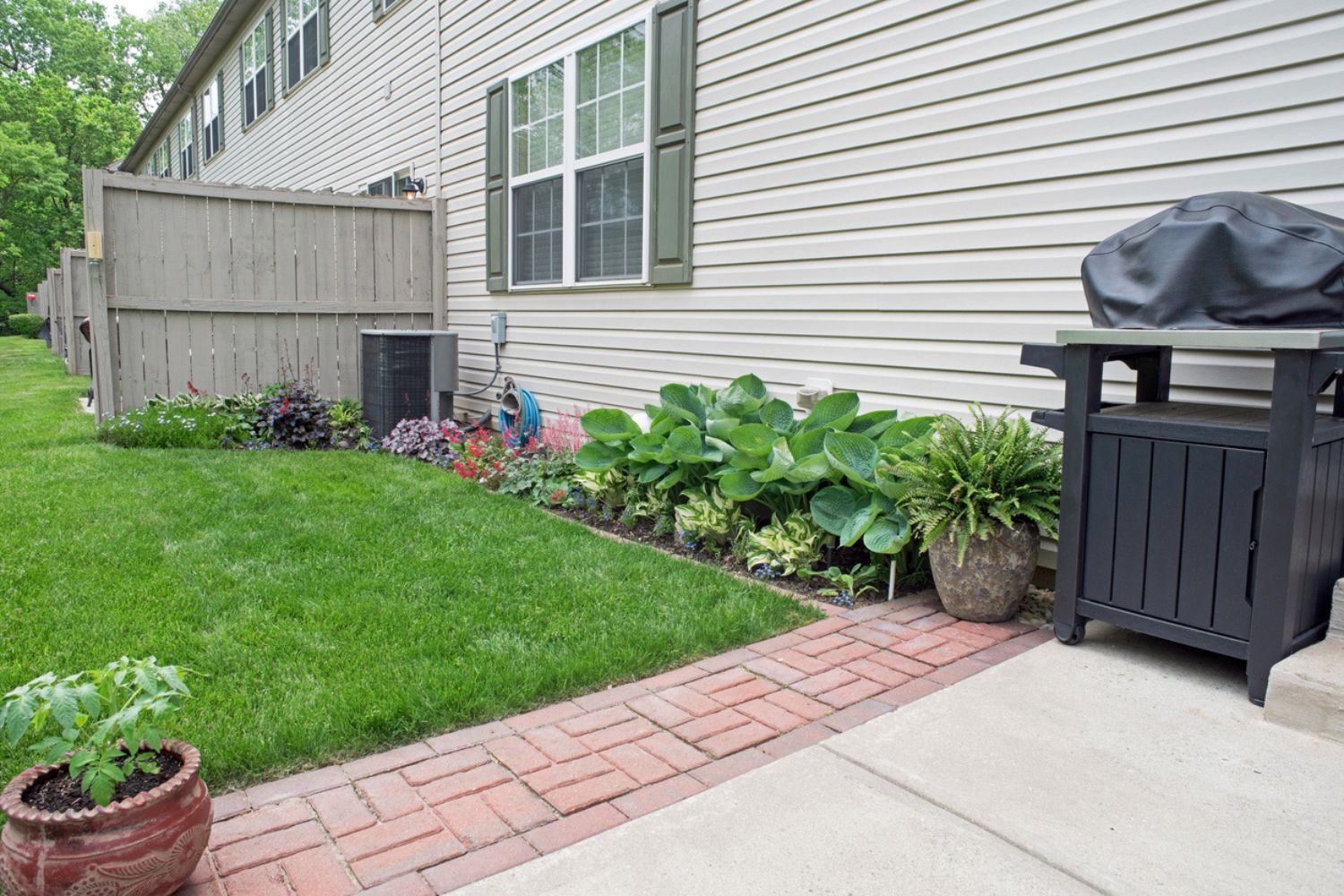
Additional Costs and Considerations
Several additional factors can impact the initial installation cost and the ongoing cost of owning and maintaining fiber cement siding. Homeowners will want to consider whether the installers will be removing the old siding and also whether the new siding will have any customizations, such as a custom paint color. It’s also important to keep in mind that the siding will require regular repairs, maintenance, and a new coat of paint every few years.
Old Siding Removal
Avid DIYers with the time, experience, and appropriate tools may be able to save on the overall cost to replace the existing siding with fiber cement siding if they remove the siding themselves instead of leaving this prep work to the professionals. However, if the homeowner decides to let the professional fiber cement siding installers remove the old siding prior to installing the new siding, there will be an additional cost for the removal and disposal.
Professional fiber cement siding installers will typically remove the old siding for about $2,000. This includes removing the siding from the home, loading it into a truck, hauling it away, then inspecting the bare cladding below the original siding to ensure that it is in good condition. Homeowners will want to keep in mind that if the installer does find problems with the cladding, there may be an additional cost of $20 to $30 per square foot for mold removal or $100 to $2,000 to repair dry rot.
Repairs and Maintenance
During installation, the contractors may discover damaged areas of the cladding that need to be repaired, replaced, or treated for mold growth. After the installation, the homeowner will still want to set aside a small budget for ongoing maintenance and repairs to keep the fiber cement siding in good condition.
Fiber cement siding can last for 30 to 50 years with proper maintenance and regular cleaning. Homeowners will want to be aware of the average cost of common siding repairs, which typically ranges from about $2 to $50 per square foot, depending on the severity of the damage. Homeowners can plan to spend about $6 to $15 per square foot for replacement boards. The higher cost is due to the materials that need to be purchased individually instead of in bulk. Additionally, hole repairs will cost about $50 to $100, and crack repairs will cost about $10 to $25 per square foot.
Painting
It’s fine to leave fiber cement siding with the original finish, but for those looking to update the appearance of the home or who need to repaint the exterior to keep up with routine maintenance, there are a wide variety of paint colors to choose from. Painting fiber cement siding will generally cost between $1,700 to $3,700 on average if the homeowner hires a professional exterior painter to complete the work.
Regular touch-ups will be required about once every 10 years to keep the exterior siding protected from UV radiation and moisture. This recurring maintenance task will typically cost about $2 per square foot, and it gives the homeowner an excuse to change the color of the siding and update the appearance of the home.
Customizations
One of the benefits of installing fiber cement siding is that the material comes in a wide range of colors, shapes, sizes, types, and styles. Additionally, if the existing designs aren’t quite able to fulfill the desired look, the homeowner can request that the manufacturer customize the fiber cement planks, panels, or shingles.
Customizing fiber cement siding can be as simple as choosing a specific color or as detailed as requesting that the material mimic a specific stone, brick, or wood building material. Homeowners can even choose siding that resembles the original, historically accurate siding for the home or get prepainted options in the color of their choice. They’ll just want to keep in mind that these customized materials will cost more than standard fiber cement siding, so they’ll need to be prepared to spend about $15 per square foot for custom fiber cement siding.
Types of Fiber Cement Siding
There are three main types of fiber cement siding, differentiated by the size and shape of the fiber cement boards. The types include fiber cement panels, planks, and shingles. To ensure that the project stays on budget and that the proposed plan for the home makes sense, it’s recommended that homeowners learn more about these three types of fiber cement siding.
| Fiber Cement Siding Type | Average Cost per Square Foot (Materials Only) |
| Panels | $2.50 to $15 |
| Planks | $4 to $6 |
| Shingles | $2 to $6 |
Panels
Fiber cement panels are typically thicker and wider than planks. This design is generally focused on mimicking wood paneling, stone veneer, stucco, or brick, though fiber cement panels can also be used to line the siding behind board-and-batten panels. The cost of fiber cement panels varies depending on the size and shape of the panel.
On average, a homeowner can expect to pay about $2.50 to $15 per square foot for fiber cement panel installation, though the cost can also be broken down into per-panel pricing. Some common options include 2-by-8-foot panels at a cost of $140 per panel, 4-by-8-foot panels at a cost of $250 per panel, and 4-by-10-foot panels at a cost of $325 per panel.
Planks
The most common option for fiber cement siding is fiber cement planks, which are also known as lap and clapboard siding. This siding material is made to emulate the appearance of traditional wood siding, giving the home a classic appearance that is relatively easy to clean, paint, stain, and maintain. Due to the narrow size of fiber cement planks, it’s easier but also more time-consuming to install fiber cement planks than it is to put in fiber cement panels.
Homeowners will need to budget for about $4 to $6 per square foot if they decide to update the exterior siding with fiber cement planks. That comes out to about $30 per plank if labor is not included in the estimate. This type of fiber cement siding is generally the most affordable, though some fiber cement shingle products may be slightly less expensive.
Shingles
If the plan is to renovate a historic home or to give an existing home a more traditional exterior aesthetic, fiber cement shingles are a good option. This siding material is made to imitate individual cedar shingles, which typically have a square or rectangular shape, vertical placement, and a soft, rounded edge that emphasizes the natural, rustic appearance of the house.
Fiber cement shingles aren’t for everyone, but if this look seems appealing to a homeowner, it’s necessary to make room in the budget for about $2 to $6 per square foot, or about $2 to $10 per shingle. Homeowners will want to speak to an installation professional if they require help measuring and estimating the approximate cost of materials for this project.
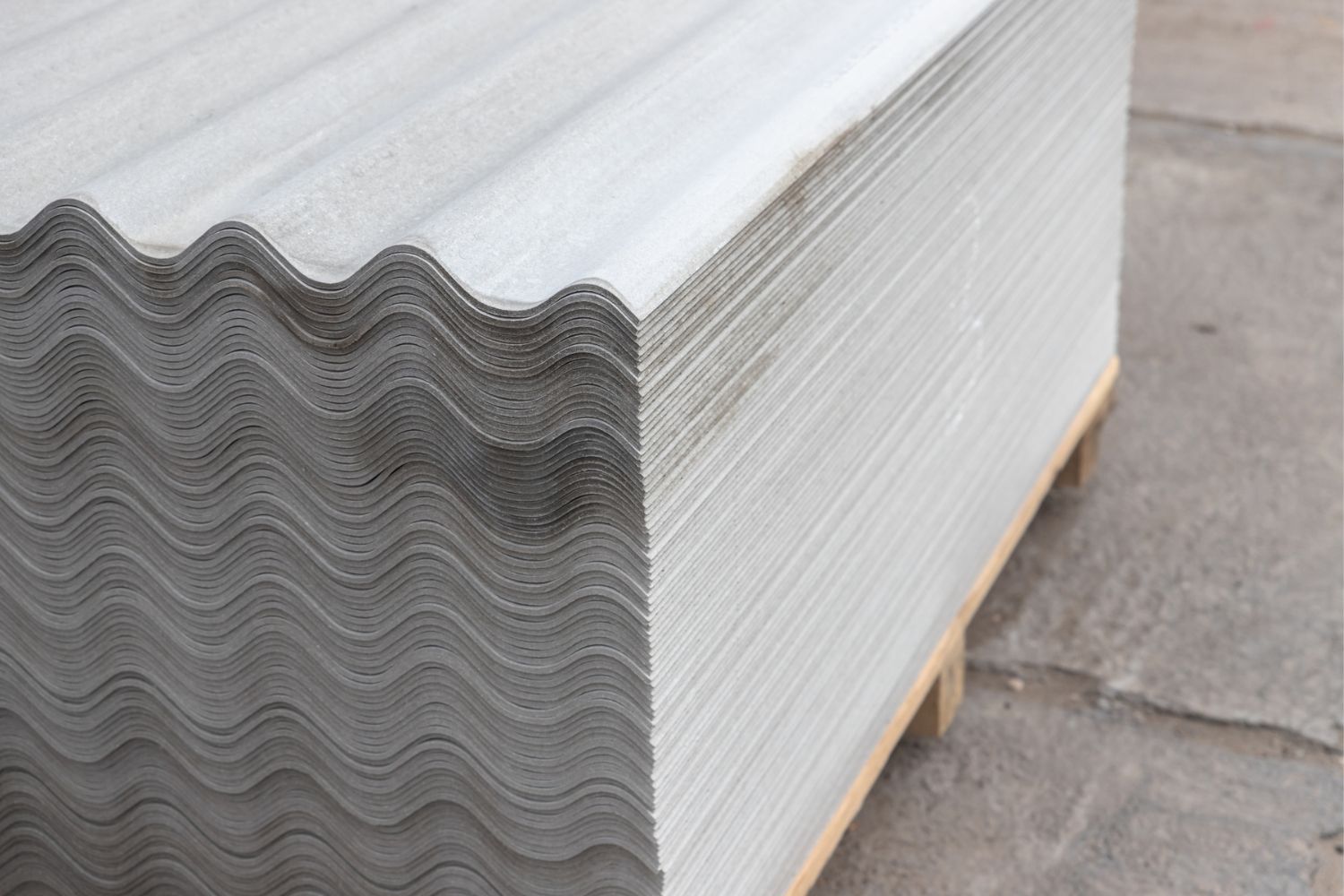
Benefits of Choosing Fiber Cement Siding
Fiber cement siding can be a costly upgrade, so homeowners may not be enthusiastic about making the change from old vinyl siding to fiber cement siding. However, fiber cement boards have significant benefits over other materials, including the durability, longevity, versatility, and high resistance to fire, pests, moisture, UV radiation, warping, and impact damage. Below, homeowners can find out more about the benefits of choosing fiber cement siding.
Longevity
Replacing torn, cracked, or otherwise broken siding can get expensive when it needs to be done every few years. Homeowners who decide to install fiber cement siding instead of using cheap vinyl siding won’t need to worry about replacing the material for about 30 to 50 years. It’s important to note, however, that the exterior paint will still need to be updated about once every 10 years to help improve the moisture resistance and UV resistance of the siding.
Homeowners will also want to keep in mind that while fiber cement siding doesn’t have high maintenance requirements, it should still be cleaned and inspected at least once or twice a year and after any severe storms. Necessary repairs should be made to the siding and a waterproof caulk used to seal any gaps around the fiber cement boards to keep moisture out of the home.
Durability
Fiber cement siding is known for its high level of durability. This siding material can hold up against impact damage, warping, UV radiation, high winds, frigid snow, scorching heat, fire, hail, moisture, rot, mold, rodents, and insects. Depending on the fiber cement siding style, the siding may even be able to withstand winds of up to 130 mph, making this material highly appealing for those who live in storm-prone locations.
Homeowners can keep their home safe from external forces by investing in fiber cement siding. As long as the siding is regularly cleaned, inspected, and repaired, it will protect the home for decades before needing to be replaced. However, homeowners will want to note that if fiber cement siding is not installed properly, it can lead to leaks, rot, mold, and pest infestations, so it’s recommended that they have a professional installation company handle this project.
Versatility
The versatility of fiber cement siding, paired with its long life and high durability, makes it an excellent option to update a home. Plain white siding can quickly become stained with dirt, grass, and other debris, but when a homeowner opts for fiber cement siding, they can choose from a wide variety of colors, shapes, types, and styles to get the ideal look for their home.
Fiber cement siding can even be used to fill gaps in renovated historic homes. Homeowners will want to speak to the customer service staff or discuss potential design options directly with the installation professional to come up with the right style, color, and design for the fiber cement siding.
Eco-Friendliness
The days of needless waste are far from being gone, but many product manufacturers and consumers are paying more attention to the effects materials have on the environment and the effect that sourcing these materials can have on the ecosystem. The housing industry is gradually moving toward more eco-friendly resources to help reduce the negative impact that humans have on the earth as a whole.
One such material with ecological benefits is fiber cement siding. This material has a long life, reducing the frequency with which the siding needs to be removed and replaced. Additionally, fiber cement siding is often made from recycled materials and sustainable products such as cement, sand, and cellulose.
Fire, Pest, and Moisture Resistance
Due to the nature of fiber cement siding, this material is highly resistant to a variety of external factors, including UV radiation, temperature fluctuations, mold, rot, and moisture. The composition of the fiber cement is even resistant against mice, rats, termites, and other pests because it is difficult to chew and is inedible, making the home a less appealing target for these invasive pests.
Investing in fiber cement siding improves the overall durability and resistance of the home to damage. The material it’s made from has a Class 1A fire rating, which means that it isn’t considered combustible and will not actively fuel an existing fire if one breaks out inside or near the home. Using fiber cement siding may also lead to lower home insurance rates, especially for those who live in an area prone to wildfires.
Impact Resistance
Fiber cement siding is a highly durable product with many resistances to temperature changes, moisture, UV radiation, mold, moisture, and more. However, it is also physically resistant against impact damage, allowing the building material to absorb direct blows from hammers, wood, airborne branches, and other objects that may make unintended contact with the side of the home.
The superior impact resistance means that the panels are less likely to crack, crumble, or break when an object or person hits the fiber cement siding. This improved durability helps to keep the home safe during thunderstorms, wind storms, ice storms, and other severe weather conditions.
Low Maintenance Requirements
One of the top reasons to invest in fiber cement siding for the home is that it requires minimal maintenance to stay in good condition. Basic maintenance includes cleaning the siding, inspecting it for any signs of damage, and making simple repairs, like replacing trim boards, patching cracks, or using waterproof caulk to seal any gaps around the fiber cement siding boards.
With this minor amount of work, the fiber cement siding can last between 30 and 50 years before it needs to be replaced. During this time, the siding will resist impact damage, warping, fire, moisture, rot, mold, rodent infestations, and insect infestations to help protect the home.
Aesthetic Appeal
Updating the appearance of the home by installing fiber cement siding can help give the house a much-needed face-lift to get it ready for an impending sale or simply to make the home more appealing for the homeowner and other residents. Fiber cement siding comes in a wide variety of colors, shapes, and styles, allowing the homeowner to select a look that suits the architecture and current aesthetic of the home.
Fiber cement siding can also be used to mimic other siding styles, such as wood paneling, stone veneer, and stucco siding, so homeowners can get the exterior design they want without sacrificing durability and weather resistance. Homeowners will want to make sure to keep up with regular repairs and maintenance to keep the siding looking great for years.
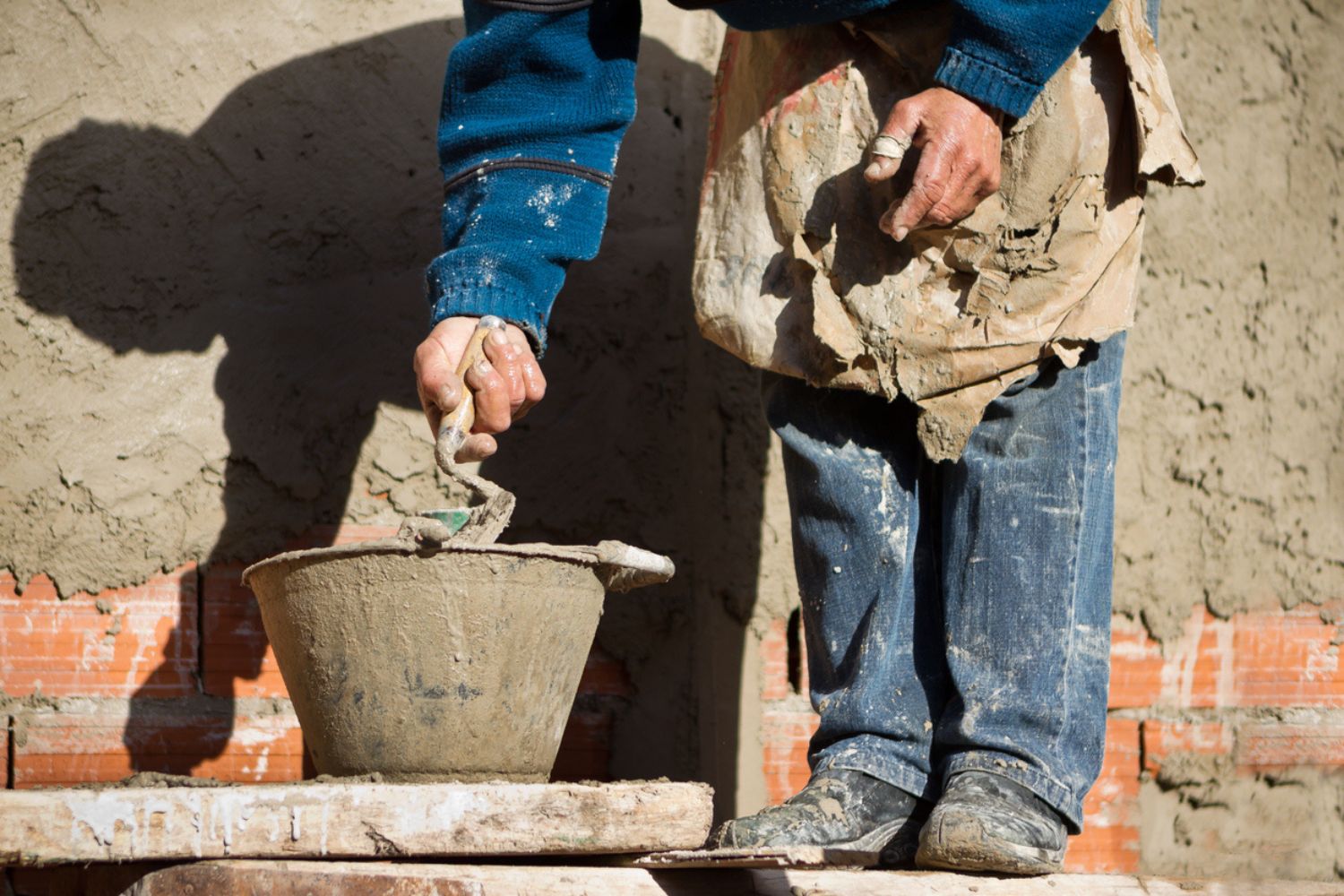
Fiber Cement Siding Installation: DIY vs. Hiring a Professional
Taking the DIY approach with vinyl siding can be a great way for homeowners to cut costs on a home renovation project, but this isn’t recommended for homeowners installing fiber cement siding. The reason is that while fiber cement siding has improved resistance and durability after installation, the heavy weight of the material can cause it to crack or break if it isn’t handled and installed properly. Trained and experienced fiber cement siding professionals know how to transport, unload, carry, and install fiber cement siding without breaking the panels or shingles.
Additionally, these house siding installation professionals often have access to a wider range of products and may be able to get the materials for a lower price than the homeowner could get from a local home improvement store. Beyond the cost factors, it’s important to mention that small miscalculations in the installation can lead to leaks, water damage, mold, rot, and insect infestations. With this in mind, to keep the home and the siding in good condition for years to come, it’s recommended that homeowners hire professional installers instead of attempting to tackle this job as a DIY project.
How to Save Money on Fiber Cement Siding Cost
Spending the premium amount for cement siding panels, trim boards, exterior paints, and labor can lead to an inflated budget that’s hard on the wallet. Given that the average cost to install fiber cement siding ranges from $6,555 to $22,825, it’s important to find ways to reduce the overall cost of the project without sacrificing quality. Before hiring fiber cement siding installers, homeowners are advised to take a look at the following ways to save money on fiber cement siding costs.
- Plan the installation for the slow season. Instead of installing the siding during the spring or summer months, plan to have the installers come during the fall, when the demand for this service is lower.
- Remove the siding as a DIY project. Take a weekend or a few days during the week before the siding installation project to remove the siding from the home. If the installers do not need to remove the siding, the overall cost of labor will be reduced.
- Get multiple quotes. It’s a good idea to research and get quotes from at least three different reputable companies in the area to ensure that the homeowner gets the best price for the installation.
- Research and compare materials costs. Some siding styles are more costly than others, so to keep the cost of the project down, it’s a good idea to select more affordable fiber cement siding products.
- DIY the maintenance. To save money on maintenance costs, learn how to clean exterior siding and maintain your fiber cement siding.
Questions to Ask About Fiber Cement Siding Installation
It’s a good idea for a homeowner to have as much information as possible about the materials, installation procedure, installation company, warranties, and cost breakdown before hiring a fiber cement siding installation company. Before and during the installation, the homeowner will want to visually inspect the material and have a good understanding of the basic steps of the project. Even after the installation, it’s important to ask questions to clear up any confusion about material warranties or work guarantees. Homeowners can consider the following key questions to ask about fiber cement siding installation.
- Are you licensed, bonded, and insured in this state?
- How long have you been installing siding?
- What type of insurance do you carry?
- Can you provide references from past work?
- Does your company do the work, or will you use subcontractors?
- Which siding materials do you stock and install?
- How long will the project take?
- What safety precautions do you adhere to during siding removal and installation?
- What permits do I need, and will you obtain them?
- Do you do other types of home exterior remodeling?
- What is your payment schedule?
- Does the estimate include all costs?
- What other costs might be associated with the installation?
- Who will supervise the site?
- How often will you be in contact with me to update me on the progress of the project?
- How will you protect my home from damage during the siding replacement?
- Are you familiar with the local building codes for fiber cement siding installation?
- What warranties or guarantees do your labor and product include?
FAQs
Upgrades to the home can be costly, time-consuming, and invasive, so before deciding on a fiber cement siding installation, homeowners are advised to learn more about the process, the alternatives, the benefits, and the drawbacks of the project. They can consider the answers below to some of the most frequently asked questions about fiber cement siding for help in deciding whether fiber cement siding is right for their home.
Q. Is fiber cement siding worth it?
Fiber cement siding is an excellent investment to help protect the home from moisture damage, pest infestations, and mold growth. Homeowners who are looking to sell in the near future may also be able to recover up to 70 percent of the fiber cement siding costs during the sale of the home, making this upgrade a worthwhile investment choice for homes.
Q. Is fiber cement siding cheaper than vinyl?
When comparing vinyl siding vs. fiber cement siding, homeowners will notice that vinyl is typically less expensive than fiber cement siding, including both the material and the cost of labor for the siding installation. However, fiber cement siding has superior durability and moisture resistance, which may make the additional cost worth it for some homeowners.
Q. How long does fiber cement siding last?
When properly maintained, exterior siding can last for decades. On average, fiber cement siding can last for up to 50 years with minimal maintenance. Depending on the fiber cement siding brand and installation company, the materials may even have a 30- to 50-year warranty on the products. Regularly cleaning and making necessary repairs throughout the years can help extend the life of the siding.
Q. What are the disadvantages of fiber cement siding?
The main drawback to fiber cement siding is that the material tends to be about two to three times as costly as vinyl siding. The labor costs are also higher due to the increased installation difficulty and the bulky weight of the material. Additionally, if a fiber-cement siding shingle or panel cracks during installation, it may absorb moisture, leading to water damage, rot, and mold problems over time. For this reason, it’s necessary to have the installation completed by trained, knowledgeable professionals.
Q. Is fiber cement siding termite proof?
Termites are a frustrating pest that can invade the home through wood siding, eating away at the structure from the inside. Investing in fiber cement siding can help to repel termite infestations because the material is inedible, meaning that the invading insects won’t be able to chew or digest it, thereby reducing the appeal of the home for the pests.
Q. Is fiber cement siding waterproof?
Fiber cement siding can absorb water and moisture from the air if the panels are cracked or otherwise broken. However, if the fiber cement siding is installed carefully to avoid damaging the material, then the panels will remain completely waterproof and moisture-resistant.
Q. Is fiber cement siding high maintenance?
One of the benefits to fiber cement siding is that it’s a low-maintenance material. About once a year and after any serious storms, it’s recommended to inspect the fiber cement siding for any splits, cracks, or holes. You can repair these minor issues with waterproof caulking or invest in an inexpensive crack repair kit, depending on the severity of the damage. Additionally, it’s good to wash the siding about one or twice a year to keep dirt and grime from building up.
Q. How durable is fiber cement board?
Installing fiber cement siding is a great way to keep the home protected. This material lasts for up to 50 years with relatively minimal maintenance requirements. It’s highly durable, resisting both impact damage and warping. Fiber cement board is also resistant to fire, moisture, termites, UV radiation, insects, rodents, and rot.
Sources: Angi, HomeAdvisor, HomeGuide

